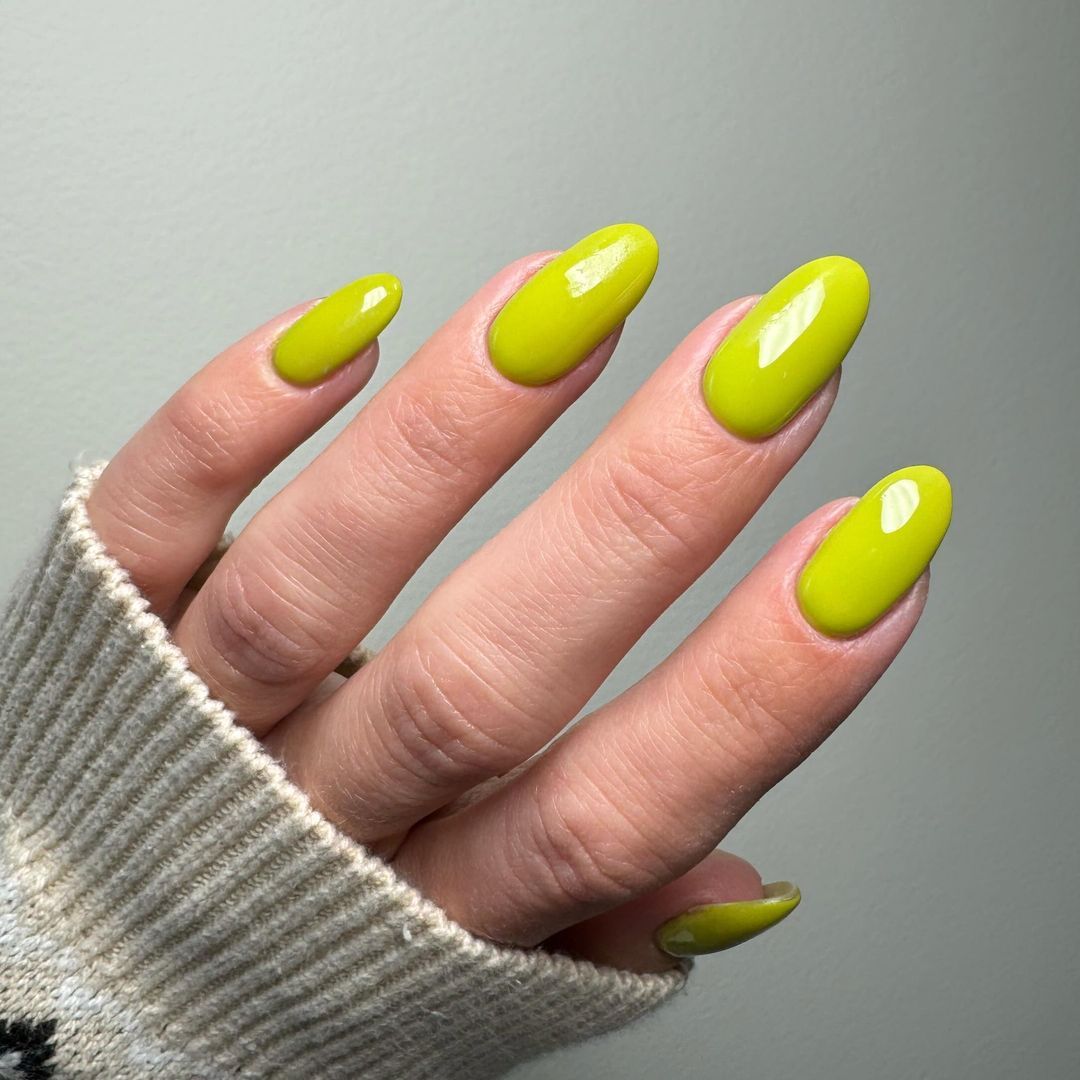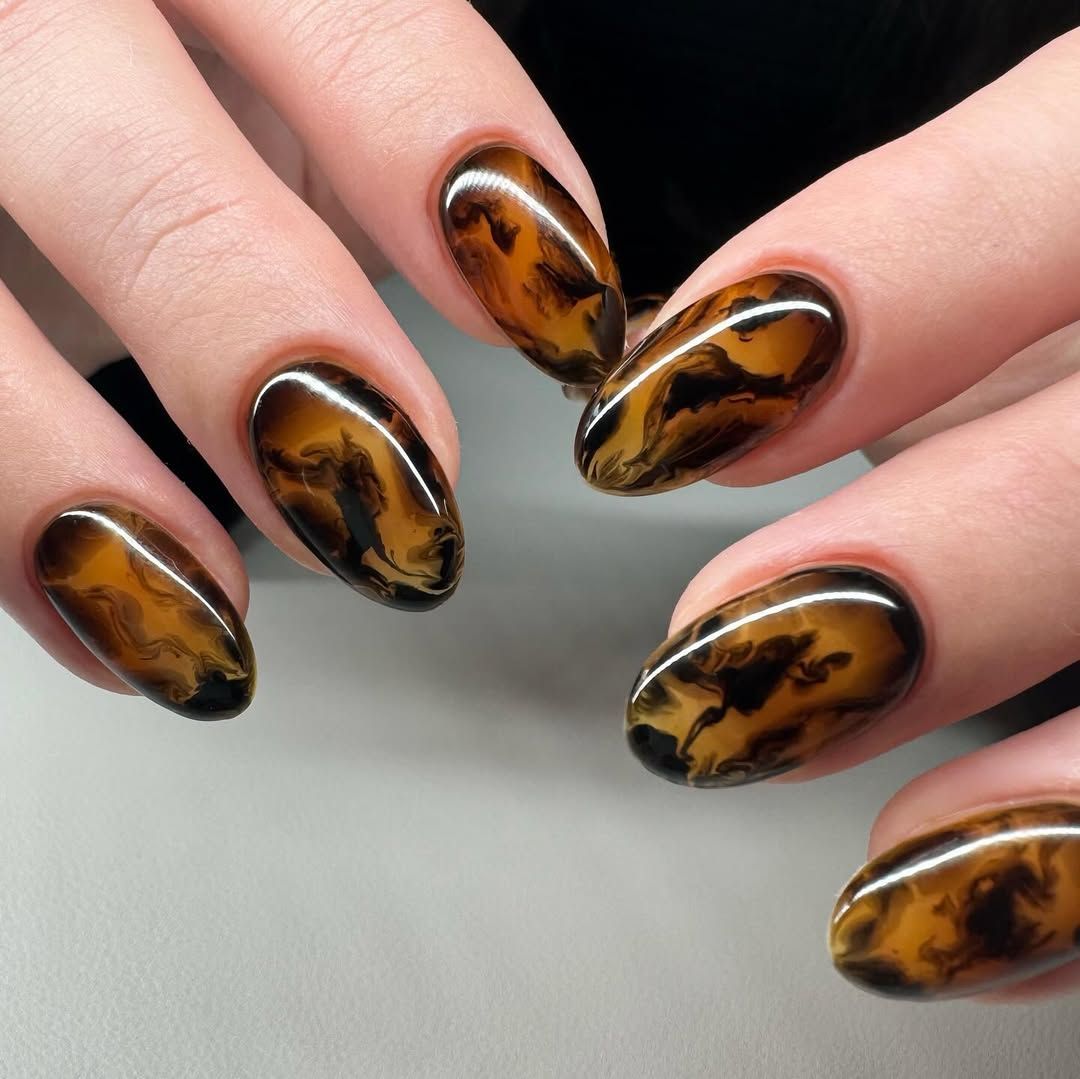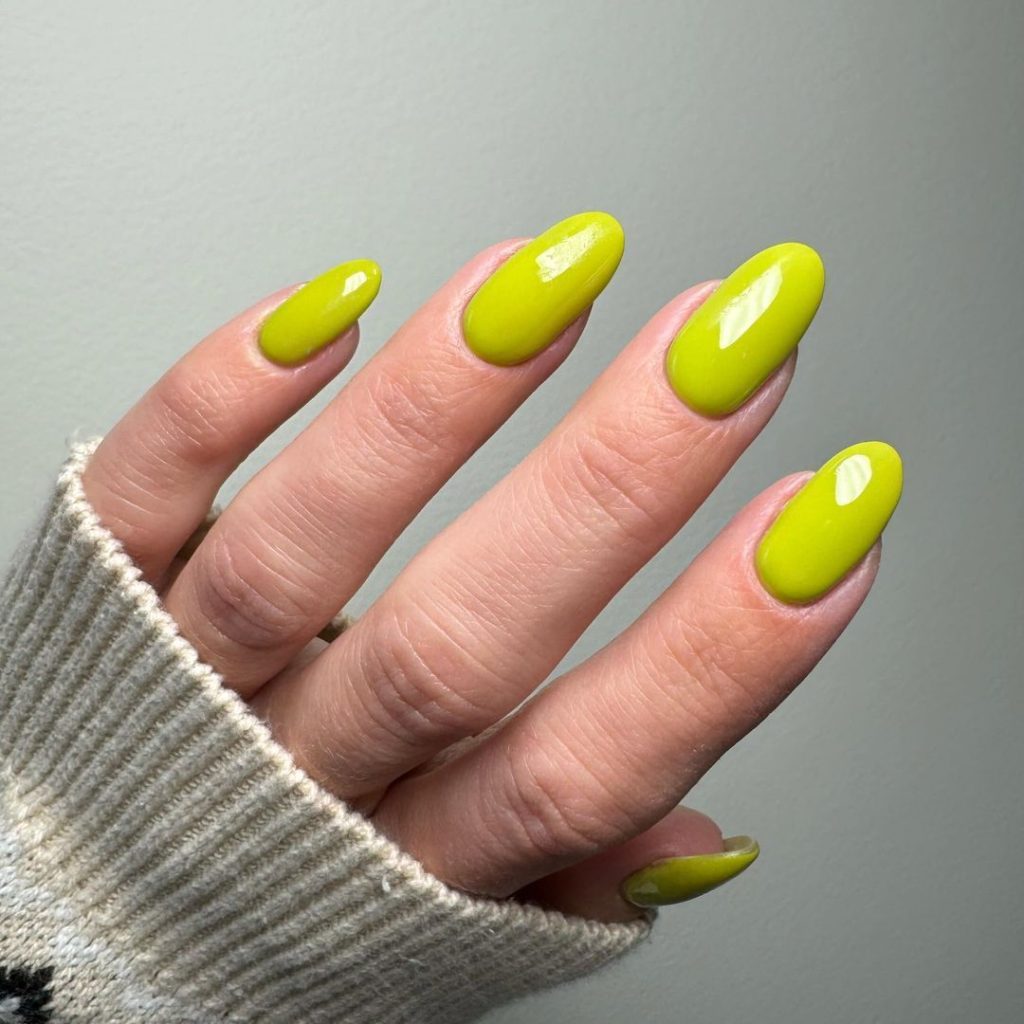What if the sleek, flawless nails you’re after come at a dangerous cost? The Russian Manicure, known for its precision and flawless finish, has quickly become a beauty trend—but hidden beneath the glamour lies risks that could leave your nails damaged or infected. From painful cuts to serious infections, here’s why dermatologists warn that the technique should only be approached with caution.

Russian Manicure. image: Instagram @alyssanailtech
The beauty industry is continually evolving with new trends and techniques. A trend that is viral is the Russian manicure. TikTokers and celebrities praise the procedure for creating a flawless look and say that they are never going back to a traditional manicure. However, the procedure has also generated negative feedback from dermatologists as the technique involves using an electric file to remove the cuticles in order to create the sleek, ‘perfect’ finish.
The American Academy of Dermatology cautions that “A trend that’s becoming increasingly popular on TikTok but can prove problematic is the Russian manicure. Also known as a dry or waterless manicure, the Russian manicure skips the usual nail soaking step. Instead, an electric file is used right away to clean, shape, and work on the nail and cuticle. The idea is to remove skin surrounding the nail and the cuticle to make your nails look long, and to place polish under the cuticle to make the manicure last longer.”
There is also the risk of infection like onychomycosis, a fungal nail infection, or paronychia, which develops in the skin around the nail. A 2022 case study highlighted a twenty-year-old woman who had a Russian manicure and developed paronychia. She visited the emergency room after experiencing pain, swelling, and pus in the area around her nail and recovered after a course of antibiotics. What’s alarming is that an infection that begins in the hands can spread to the rest of the body. The invasive approach can introduce bacteria or fungi into the bloodstream if the protective cuticle is removed.
Gentler alternatives like applying cuticle oils can improve the appearance of nails while preserving the nails and surrounding skin. In this article, we explore the dangers of Russian manicures, examining the potential health risks, the impact on the nail industry, and the legal and liability concerns that come with performing such procedures. We will also discuss how to mitigate these risks through proper training, certification, and regulation, ensuring that professionals can offer high-quality service while keeping the safety of their clients a top priority.
What is a Russian Manicure?
The term Russian manicure refers to a nail grooming technique, as opposed to a visual style. The Russian Manicure, also known as a dry or e-file manicure, is a nail care technique that uses an electric file for a clean, flawless finish with a focus on precise cuticle work. It differs from traditional manicures by avoiding soaking the nails and using a drill with specialized bits to remove excess skin.
Essentially, it is a combination of precise cuticle work, which can be done using nail bits, scissors, or nippers, and gel overlay. Abrasive brushes are sometimes used for intense exfoliation and drill-like tools and scissors are used to remove cuticle and skin surrounding the nail, which leaves more room for polish. Let’s take a closer look at this manicure, its benefits and its potential risks.
How to mitigate the risks

Russian Manicure. Image: Instagram @alyssanailtech2
Dr. Stern has seen a few infections pop up online. “Many of the images that I have seen on social media that are posted to flaunt beautiful nails in fact show nails with evidence of chronic paronychia. While the polish may look impeccable, to the trained eye I see signs of infection: puffy, pink, swollen nail folds,” she tells Glamour.
“If done properly, with sterilized tools and by a professional who has taken classes, the Russian manicure is a safe technique which has lots of benefits. The only risk is if you get a nail technician who has a lack of education of this technique or is not sterilizing tools properly. It’s not about a technique, an e-file machine, or sharp scissors. It’s about who does it.”
One of the most effective ways to mitigate the risks associated with Russian manicures is through extensive training and education. Nail technicians must receive specialized instruction on the safe and proper use of electric tools, cuticle removal techniques, and client consultation. By ensuring that professionals are well-versed in safety standards and hygiene protocols, the industry can reduce injuries and infections.
Educating consumers is crucial too. Clients should be aware of the potential risks of Russian manicures, including the possibility of nail and cuticle damage. Beauty professionals can play a key role by offering clear information about the procedure and encouraging clients to ask questions about the tools and products.
The Health Risks: Infection and Injury
Cuticle and Nail Bed Damage
The use of electric drills and other sharp tools in Russian manicures increases the likelihood of causing injury to the cuticles and nail bed. If these areas are not handled correctly, they can become nicked, leading to open wounds that provide an entry point for infections, including fungal or bacterial infections that can be difficult to treat and may lead to long-term damage.
Increased Risk of Overworking the Skin
The aggressive nature of the technique often involves removing a significant portion of the cuticle. While this may result in a smooth, polished appearance in the short term, over-manipulating the skin around the nails can lead to thinning, irritation, and weakening of the nail matrix. This can hinder the nail’s natural growth cycle and may result in long-term damage to the overall health of the nail.
Potential for Allergic Reactions
In addition to physical damage, Russian manicures can also trigger allergic reactions. The chemicals and products used during the procedure, such as cuticle removers and artificial nail products, can cause skin sensitivities or allergic reactions. Clients may not always be aware of their allergies or sensitivities, further increasing the risks associated with the procedure.
Impact on the Professional Nail Industry
Undermining Industry Standards
The rise of Russian manicures, particularly when performed without adequate training, poses a risk to the professionalism and safety standards of the nail care industry. Many salons may adopt these techniques without ensuring their technicians are fully educated on the risks, leading to inconsistent practices and a higher likelihood of injury. This lack of regulation could undermine consumer trust in the broader nail care industry and hurt established brands that prioritise safety and quality.
Pressure to Keep Up with Trends
In an industry that thrives on trends, there is always the temptation for beauty professionals to adopt the latest technique to attract clientele. Russian manicures, with their promise of precision and a luxurious finish, are no exception. However, this pressure to adopt trendy techniques may lead to a disregard for client safety, especially when it comes to unregulated or emerging treatments that have not been thoroughly vetted for their potential risks. This could, in turn, compromise the overall reputation of the beauty industry.
Legal and Liability Concerns
The growing popularity of Russian manicures, combined with the risk of injury, raises legal and liability concerns for beauty professionals and salon owners. As practitioners use sharp tools close to the cuticle, any error or oversight can lead to injury or infection, creating potential legal ramifications. For instance, if a client experiences an infection or permanent damage due to improper technique, the practitioner or the salon may be held legally responsible for medical expenses or loss of income resulting from the injury. It is essential for professionals to be aware of the legal implications of their work, ensuring that they follow strict hygiene practices and adhere to local health regulations to mitigate such risks.
To safeguard against potential lawsuits, it is important for salons and technicians to have liability waivers in place. These documents, signed by clients, outline the risks involved in procedures like Russian manicures and release the salon from certain legal claims. However, while waivers provide some legal protection, they do not absolve practitioners from the obligation to provide competent care. Salons must also ensure that their liability insurance adequately covers such procedures. Insurance should extend beyond general salon coverage to include specifics related to the risks inherent in advanced techniques like Russian manicures.
Moreover, consistent monitoring and adherence to local regulations are essential for minimizing legal risks. As this technique is new in some regions, laws surrounding its practice may be under development or open to interpretation. Professionals must stay informed about changing legal requirements, such as those related to licensing, tool sterilisation, and client consent, to ensure they are not operating in violation of local laws. By being proactive in understanding their legal obligations, practitioners can reduce the likelihood of liability issues, protect their business, and maintain a trustworthy reputation within the industry.
Stricter Regulation and Industry Standards
To ensure the safe and professional execution of techniques such as the Russian manicure, it is crucial to establish clear guidelines for training, certification, and safety. A structured training program should be developed, focusing on the proper techniques, hygiene practices, and the safe use of tools and products. This training must be backed by a certification process where professionals undergo assessments to verify their skills. Importantly, these programs should be designed by industry experts, taking into account the latest advancements in manicure techniques to guarantee that practitioners are equipped with the knowledge to avoid common risks like infection or injury.
Safety protocols must be at the forefront of Russian manicures. Establishing mandatory standards for disinfecting tools, sanitising workstations, and using disposable equipment is essential in preventing cross-contamination. These regulations should be in line with local health and safety standards and should include audits to ensure compliance. It is important for industry associations to issue updated guidelines when new techniques are introduced, ensuring that practices evolve alongside innovation while prioritising safety.
Finally, education programs ensure that practitioners stay up-to-date with new methods, tools, and safety regulations. Establishing a system for advanced training and refresher courses can help professionals refine their skills and remain informed about the latest trends and safety standards. Through a combination of structured training, certification, and regular updates to safety practices, the industry can safeguard the well-being of both clients and practitioners while maintaining high aesthetic standards.
FAQS on the dangers and health risks of Russian manicure
1. What is a Russian manicure, and how does it differ from traditional manicures?
A Russian manicure involves the use of a special drill or electric file to clean and shape the cuticles, remove dead skin, and tidy up the nail bed. Unlike traditional manicures, which often involve pushing back the cuticles and trimming them with scissors or nippers, Russian manicures use the drill to create a more precise and polished finish. While this method offers a sharp and clean look, it can increase the risk of injury and infection if not done correctly.
2. What are the potential health risks of a Russian manicure?
The main risks associated with Russian manicures include:
- Infections: The electric drill can cause small cuts or abrasions on the skin, increasing the risk of bacterial, fungal, or viral infections. If tools are not properly sanitized, bacteria can be introduced to the nail bed.
- Nail Damage: Overuse of the drill can damage the nail plate, weakening nails and making them more prone to breakage.
- Cuticle Injury: Excessive removal of the cuticle or harsh handling can lead to painful, inflamed cuticles and, in severe cases, scarring or permanent damage to the skin.
3. How can I minimize the risks of getting a Russian manicure?
To minimize risks, it’s essential to:
- Ensure the salon uses sanitized and properly disinfected tools.
- Ask the technician about their training and experience with Russian manicures.
- Avoid over-drilling the cuticle area or nails.
- Avoid Russian manicures if you have any existing nail infections or skin conditions.
- Regularly moisturize the cuticles and surrounding skin to keep them healthy.
4. Are there any health conditions that should prevent someone from getting a Russian manicure?
Yes, people with certain conditions should avoid Russian manicures, including:
- Nail infections (bacterial, fungal, or viral)
- Sensitive skin or eczema around the nails
- Cuticle issues such as hangnails, which can worsen with aggressive trimming
- Blood disorders that may affect healing or increase the risk of bleeding
If you have any of these conditions, it’s best to consult with a dermatologist or nail professional before considering a Russian manicure.
5. What are the safer alternatives to a Russian manicure?
If you’re concerned about the risks of a Russian manicure, consider these alternatives:
- Traditional manicures with gentle cuticle care, without the use of a drill.
- Gel or dip powder manicures for long-lasting results without aggressive techniques.
- Nail care at home using cuticle oils and creams to maintain healthy nails and skin.
- Gentle cuticle pushbacks with non-invasive tools like wood sticks or stainless steel pushers to avoid skin injury.
Conclusion
While Russian manicures offer a highly polished and appealing aesthetic, the associated risks cannot be overlooked. From physical injuries to legal concerns, the dangers of this technique are real and should be addressed by professionals and consumers. If you want to try a Russian manicure, be sure to find a qualified technician who commits to three-step sterilization of their tools. Familiarising yourself with the method’s downsides and understanding the potential risks is important too.
Jasmeen Dugal is Associate Editor at FashionABC, contributing her insights on fashion, technology, and sustainability. She brings with herself more than two decades of editorial experience, working for national newspapers and luxury magazines in India.
Jasmeen Dugal has worked with exchange4media as a senior writer contributing articles on the country’s advertising and marketing movements, and then with Condenast India as Net Editor where she helmed Vogue India’s official website in terms of design, layout and daily content. Besides this, she is also an entrepreneur running her own luxury portal, Explosivefashion, which highlights the latest in luxury fashion and hospitality.











